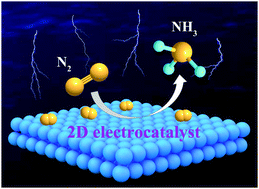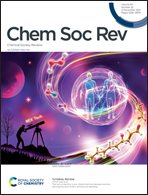Emerging two-dimensional nanomaterials for electrochemical nitrogen reduction
Abstract
Ammonia (NH3) is essential to serve as the biological building blocks for maintaining organism function, and as the indispensable nitrogenous fertilizers for increasing the yield of nutritious crops. The current Haber–Bosch process for industrial NH3 production is highly energy- and capital-intensive. In light of this, the electroreduction of nitrogen (N2) into valuable NH3, as an alternative, offers a sustainable pathway for the Haber–Bosch transition, because it utilizes renewable electricity and operates under ambient conditions. Identifying highly efficient electrocatalysts remains the priority in the electrochemical nitrogen reduction reaction (NRR), marking superior selectivity, activity, and stability. Two-dimensional (2D) nanomaterials with sufficient exposed active sites, high specific surface area, good conductivity, rich surface defects, and easily tunable electronic properties hold great promise for the adsorption and activation of nitrogen towards sustainable NRR. Therefore, this Review focuses on the fundamental principles and the key metrics being pursued in NRR. Based on the fundamental understanding, the recent efforts devoted to engineering protocols for constructing 2D electrocatalysts towards NRR are presented. Then, the state-of-the-art 2D electrocatalysts for N2 reduction to NH3 are summarized, aiming at providing a comprehensive overview of the structure-performance relationships of 2D electrocatalysts towards NRR. Finally, we propose the challenges and future outlook in this prospective area.



 Please wait while we load your content...
Please wait while we load your content...